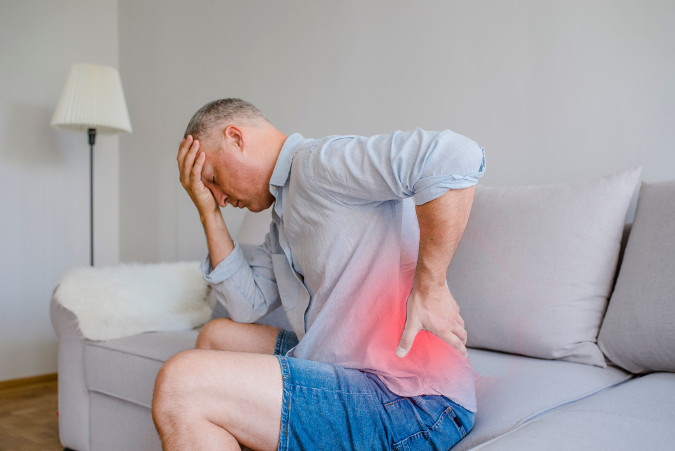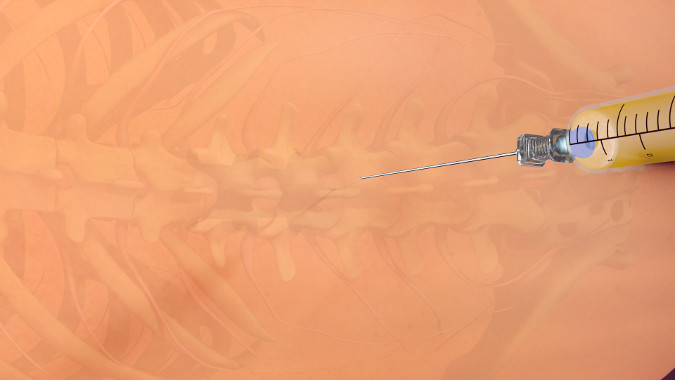When Do Chiropractors Recommend Lumbar Epidural Steroid Injections?
Have you been advised to have lumbar epidural steroid injections, also called LESIs?
Primary care providers, chiropractors, or other specialists may suggest these injections to ease back pain.
Let’s break down the term:
- Lumbar – Low back
- Epidural – Around the “dura mater,” the tough membrane that covers the brain and spinal cord.
- Steroid – Cortisone, which has anti-inflammatory properties
- Injection – Introduced to the body with a needle
Chiropractors sometimes suggest LESIs as one part of an overall treatment program. The injections have some downsides, however. So, read on to learn the pros and cons.
What Does the Research on LESIs Say?
You may have heard these injections called a “shot in the back.” Furthermore, you may wonder what they do.
Would a chiropractor advise such a treatment? Let’s look at some research:
Increased Fracture Risk
A study published in the June 2013 issue of Journal of Bone and Joint Surgery states:
- “Each successive injection increased the risk of fracture by a factor of 1.21….”
- “The findings suggest that LESIs … may lead to increased bone fragility … suggesting that use of LESIs should be approached cautiously in patients at risk for osteoporotic fractures.”
We have known for a long time that steroids make the bones weaker. This research adds to our knowledge.
As a result, you may want to consider safer options for a herniated or ruptured disc, sciatic nerve pain, low back pain, or spinal stenosis.
Temporary Relief
According to the Cleveland Clinic Journal of Medicine, December 2004:
- “While 50-75% of patients with leg pain received temporary relief after lumbar epidural steroid injections, only 25-57% received excellent long-term relief. Generally, patients who received little relief from their first injection received little benefit from a second or third injection.”
- Also, the Archives of Physical Medicine and Rehabilitation, March 2004, says: “Lumbar epidural steroid injections provide 32% of patients sustained relief.”
Chiropractors realize the limitations of lumbar epidural steroid injections.

How Do Lumbar Epidural Steroid Injections Work?
You probably have a lot of questions about the LESI injection. For example, do these shots:
- Heal a herniated disc?
- Cure spinal stenosis?
- Heal the sciatic nerve?
It turns out lumbar epidural steroid injections don’t do any of that.
Instead, the shot dries up inflammation. Many people take steroids by mouth for the same reason: to reduce swelling.
In the spine, you can think of inflammation as a watery fluid. You can’t compress fluid. So, when there is inflammation, or fluid, around tissues, the fluid causes increased pressure. When you put pressure on inflamed spinal tissues, pain results.
To understand why lumbar epidural steroid injections fall short, consider these experiences:
- A patient has a herniated disc. Abnormal spinal biomechanics are part of the cause. What happens to this patient a few weeks after getting a shot? As you may have guessed, the pain returns.
- What about a patient with spinal stenosis? Sciatic nerve pain? A ruptured disc? The pain also returns.
Why? The same stress that caused the problem reappears, so symptoms return. Spinal biomechanics were not fixed.
Most studies show only short-term or partial relief with lumbar epidural steroid injections.
When is an LESI Usually Recommended?
Advice about lumbar epidural steroid injections varies with the specialist you visit.
- Your primary doctor, for instance, might give you medications. Anti-inflammatories, muscle relaxants, or pain pills are common options. What if the pills don’t work? The doctor will then suggest an injection.
- Your spinal specialist or orthopedic doctor may urge you to try physical therapy and medications. An injection may be proposed if these efforts fail.
- Your pain management doctor may suggest an injection right away. Another shot in 2 to 3 weeks may also be advised.
Keep in mind that the care described above does not correct biomechanics.
These treatments tackle inflammation, but not the cause. Only a chiropractor can address the root cause of the inflammation.
At Algonquin Chiropractic, we never recommend an injection as the only therapy. We know studies show a poor long-term success rate with a shot alone. Instead, we treat spinal biomechanics at the same time for better results.
How Do Chiropractors Address Spinal Bio-Mechanics?
Chiropractic care differs from the standard medical model. First, a chiropractor thinks about what to avoid, such as:
- Long-term use of opioid prescription painkillers – While you may need meds for the short term, we discourage long-term use. These meds can be addictive.
- Epidural steroid injections – If you do not respond well to treatment, we may give you a shot. We then continue treatment, which works better once the inflammation dries up. Shots alone, however, show only a 15% long-term success rate. This is why we don’t begin treatment with a shot.
- Surgery – We do all we can to avoid back surgery. People think it is a quick fix. That’s not true, however. We know from the British Medical Journal that people who had surgery and those who did not feel about the same after 1 and 2 years. Why go through the risks, downtime, and expense of surgery for the same results?
Keeping these cautions in mind, chiropractors provide many other treatments.

What Treatments Do Chiropractors Provide?
A visit to a chiropractor is similar in many ways to seeing a medical doctor. First, you will provide a complete history. Next, you will get a thorough exam. We will also order any needed imaging. We then come up with a diagnosis.
If we find that we can help you, we then develop a treatment plan, which may include:
- The Cox Technique – This is a gentle, painless, hands-on spinal decompression therapy. It boasts a 91% success rate and is a great way to improve spinal biomechanics.
- Electrical stimulation – Pain is controlled, and inflammation is decreased using this method.
- Massage Therapy – Massage breaks up adhesions and loosens scar tissue. In addition, it relaxes muscles, improves range of motion, and improves posture.
- Vibration Therapy – This therapy targets core strength, balance, and posture. You are likely to improve three to four times faster than with traditional rehab.
- Super Pulsed Laser – Increased cellular energy and better circulation speeds soft-tissue healing.
- Custom Orthotics – Correcting foot biomechanics helps align the feet, knees, hips, pelvis, and lumbar spine. As a result, there is less stress on the spinal discs. Foot biomechanics improves spinal biomechanics.
- Rehabilitation (Exercise) – First, we used gentle stretching and pain-relieving exercises. Then we progress to core-strengthening and full-body exercises.
- Spinal Bracing – Limiting movement of the trunk adds stability. This, in turn, helps you take part in more daily activities.
If you have a herniated disc or sciatic nerve pain, you will usually improve by 50% in the first 2 to 4 weeks of care at Algonquin Chiropractic. We will then continue to treat you if you are improving.
What if you don’t improve? In that case, we will consider an MRI or consult with other doctors.
Chiropractors may consider a shot at this point to reduce inflammation and promote healing.
When Would I Need to See Another Provider?
We will refer you outside our practice in an emergency. If you show these signs, for example, other specialists may be needed:
- Cauda equina syndrome, where patients can lose control of their bowel and bladder
- Progressive neurologic deficit, when weakness quickly gets worse
- Symptoms of a fracture, tumor, or infection
The good news? These are fairly rare complications.
Call on Us to Ease Your Pain
Does it seem like your back pain never goes away? Don’t wait for relief when help is as close as Algonquin Chiropractic Center in Algonquin, IL. Give us a call at (847) 854-2000 so we can help you get more out of life.
Editor’s note: This blog was originally published on March 9, 2017 and was updated on July 9, 2019.



